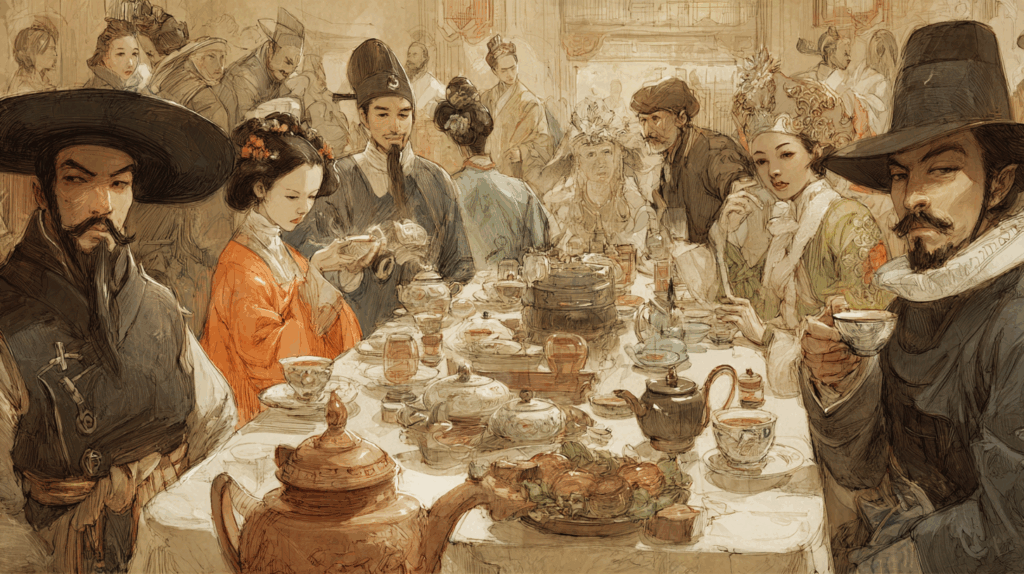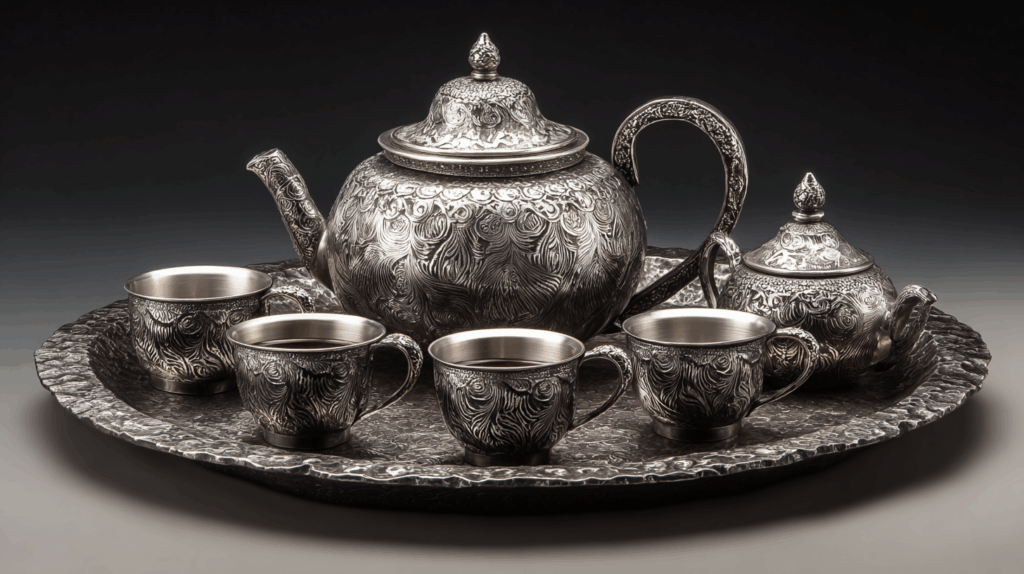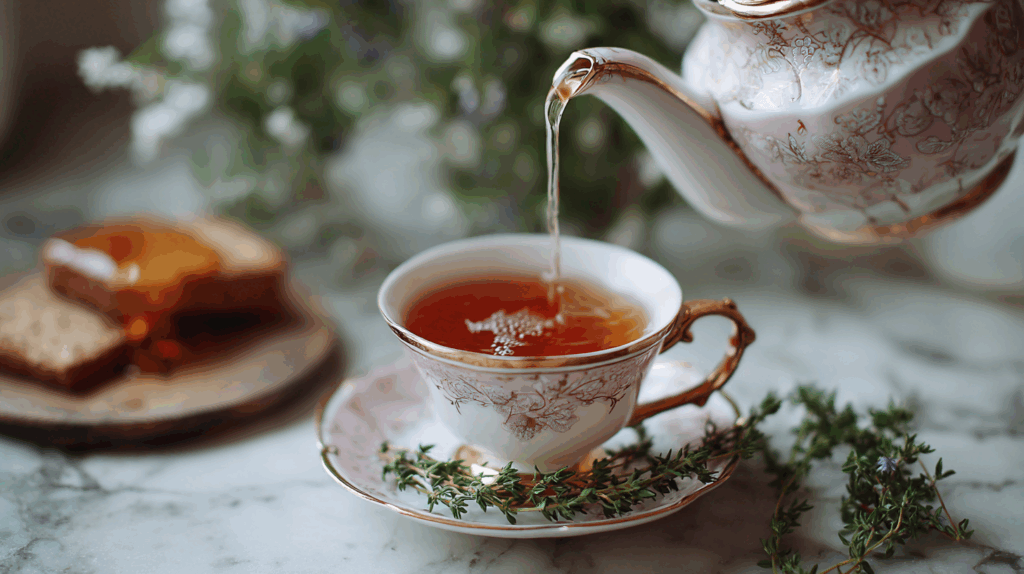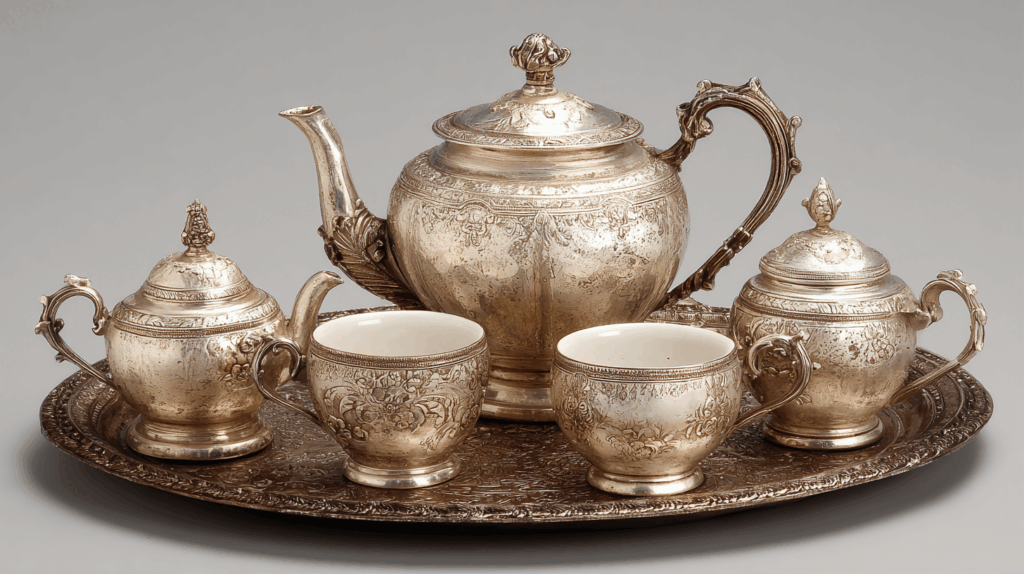There’s something undeniably enchanting about hosting or attending a tea party. It’s a moment to pause, connect with loved ones, and embrace timeless traditions. From the comforting tea in floral cups to the warm scones and sparkling conversation, the tea parties we envision today have been an integral part of English and American culture for years.
Tea parties and tea parlors have been popular in the United States for a long time, but there has been a recent resurgence in the practice, largely due to shows like Bridgerton and the popularity of Jane Austen novels.
People are also inheriting their mother’s and grandmother’s china or tea sets and finding fun ways to use them more often. Depending on the style of party you’re going for, you don’t have to be a pastry chef, an interior decorator, or a tea expert to put together something special for a group of friends or family.
Here’s your guide to everything you need to host a beautiful tea party, the metal tools that make it shine, and how to keep those pieces beautiful for years to come.

A Brief History of Tea Parties
Tea itself originated in China but was introduced to England around the 1650s by Catherine of Braganza, the wife of King Charles II. They hosted the first-ever recorded tea party to celebrate their marriage.
The concept of having an “Afternoon Tea” every day was introduced in 1840 by Anna, the 7th Duchess of Bedford, who would often feel hungry around the same time every day, according to The History and Heritage Accommodation Guide. She insisted that a tray of tea, bread, and butter would be brought to her room every afternoon — and thus, afternoon tea was born.
During the Victorian era, afternoon tea became a social ritual for upper-class ladies, who adhered to a strict protocol that encompassed the tea, the food, tableware, guest lists, and fashion.
Hosting a tea party was considered a great honor, as it was particularly important to their social standing.
A classic afternoon tea usually consists of finger sandwiches and scones served with clotted cream and jam. Small cakes and pastries are also served. Tea is poured from silver teapots into delicate bone china cups and stirred with either silver or gold spoons.
In the United States, tea rooms gained popularity around the 1900s, when many women sought to supplement their income and start their own businesses. These spaces were largely owned and operated by women for women, which helped foster a sense of female independence.
Many of these tea rooms were based in living rooms or outdoor gardens and used a simple sign in the window as their advertising.
During Prohibition, they flourished because many establishments for social gatherings, such as bars, closed. However, they would eventually get phased out once it was over.
In the early 2000s, a slight revival of the tea room movement occurred, with many popping up across the United States — however, by the 2010s, very few remained.
Enter Brigerton. Due to the popularity of the Regency era show, afternoon tea is experiencing yet another comeback, with many existing tea parlours seeing an increase in reservations and more people serving afternoon tea at home.
Tea parties may seem silly or a thing of the past, but they’re steeped in history — a way for women to reconnect in a safe space with the added benefit of tea and snacks.

Essential Metals for Tea Sets and Accessories
Metal tea sets have a distinct charm that sets them apart from regular items, and the type of metal used plays a significant role in their appeal and functionality. There are three most commonly used metals often found in tea services, which are ideal for creating a memorable tea party experience.
Silver: The classic, silver has been the go-to choice for teapots, sugar bowls, milk jugs, and teaspoons since the Victorian era. Its reflective shine and ability to retain heat make it a practical and elegant option. Silver exudes refinement, instantly elevating any table it graces.
Pewter: Known for its soft, muted finish, pewter has a rustic yet refined look that appeals to many tea enthusiasts. Pewter teapots and accessories are also commonly found in vintage sets, especially those from the mid-century period.
Copper: With its warm, rich tone, copper tea sets and accessories are undeniably eye-catching, particularly in Middle Eastern and Turkish styles. Copper’s excellent conductivity makes it a functional material for tea service, as it keeps beverages at the perfect temperature.
An honorable mention is nickel and silver plating — also sometimes used for accessories such as strainers, spoons, and serving tongs. These metals offer durability and shine at a more accessible price.
Depending on the theme you have in mind for your tea party, each of these materials adds not only utility but also mood and texture to the table.

What You Need for a Proper Tea Party
Whether you’re hosting a formal, whimsical, or cozy event, to create a truly memorable experience, you’ll need a few key items to set the tone and make your guests feel special.
The essential teaware and tableware you will need are:
- A teapot
- Teacups and saucers
- Tea strainers or infusers for loose-leaf teas
- A creamer and sugar bowl (with tongs for sugar cubes)
- Dishes for cream, butter, and jam
- Teaspoons and dessert forks
Once you’ve gathered your essentials, it’s time to decorate your space. Some simple touches include:
- A tablecloth
- Napkins and napkin holders
- China plates
- Serving trays and tiered stands
- Flowers in vases
- Other themed items of your choice
Consider soft, pastel hues like blush pink, mint green, lavender, or baby blue — something that complements the overall theme of your party. Seasonal blooms, such as roses, peonies, tulips, or wildflowers, are also a lovely addition to your table.
String lights or candles can add a whimsical glow if the party extends into the evening, and personalized place cards add a special touch, making guests feel welcomed and valued. Each place setting should feel inviting and complete.
With thoughtful layering of textures, colors, and accents, your tea party will be a memorable celebration of style.
If you wish, you can also play party games like bingo, create a jewelry-making station, or, if you’re outdoors, play croquet. Don’t forget a playlist to set the tone, like this one.
Tea Party Recipes: Classic & Crowd-Pleasing
No tea party is complete without an assortment of delectable treats. Here are some easy recipes for your next get-together.
Easy Irish scone recipe with pancake mix:
Ingredients:
- 1 ½ cups all-purpose pancake mix
- ½ cup unsalted butter, cold and cubed
- 3 tbsp granulated sugar
- 1 large egg
- 3 tbsp milk of choice
- ¼ cup Greek yogurt
- ½ teaspoon salt
- 1 teaspoon vanilla extract
- Mix-ins of your choice
- Preheat your oven to 375°F. Line a baking sheet with parchment paper.
- In a large bowl, whisk together pancake mix, sugar, and salt.
- Add the cold butter and use a fork or your fingers to work it into the flour mixture until it resembles coarse crumbs.
- In a small bowl, whisk together the milk, egg, yogurt, and vanilla extract until well combined. Pour this into the dry ingredients and mix until just combined.
- Shape the mixture into individual balls that resemble a softball shape and place them on a baking sheet.
- Bake for 15-20 minutes or until golden brown. Serve warm with clotted cream and jam.
- Place on a tiered stand.
Quick and Easy Finger Sandwiches:
Ingredients:
- 8 slices of bread (white or whole grain)
- Softened butter
- 4 ounces cream cheese
- 1 cucumber, thinly sliced
- Smoked salmon (optional)
- Spread a thin layer of butter on one side of each slice of bread.
- On half the slices, spread cream cheese evenly. Add cucumber slices and smoked salmon, if desired.
- Top with the remaining bread slices and gently press down.
- Trim the crusts and cut into small squares or triangles.
- Place on serving trays.
Now, for the tea: Offer a variety that includes black (such as English or Irish Breakfast), green, herbal, and a floral blend. Provide milk, lemon slices, honey, and sugar cubes so guests can customize their cup.

Restoring Metal Tea Sets to Glory
There’s something special about serving tea from a family heirloom — a teapot passed down from your grandmother, or a tray found at a flea market that reminds you of your childhood home. But with age comes wear: tarnish, dents, wobbly handles, and worn finishes.
Silver does require care because it’s prone to tarnishing over time. Always use a soft cloth and a mild silver polish to give your silver a gentle shine well before and after use. For stubborn spots, you can make a paste of baking soda and water and gently rub it onto the tarnished area.
Pewter items can develop small dents or scratches, especially if they’ve been lovingly used over the years. To clean, mix one cup of distilled white vinegar with 1 ½ cups of all-purpose flour to form a paste. Gently rub this onto the pewter with a soft cloth, let it sit for a few minutes, then rinse and dry.
Copper develops a natural patina, which some cherish for its character, while others prefer the original shine. For cleaning, create a gentle paste using equal parts lemon juice and salt. Rub this paste onto the copper with a soft cloth, rinse well, and dry immediately.
By following these simple, gentle methods, you’ll keep your pewter and copper tea accessories looking beautiful for every gathering. For extra care, you can call on us.
Biro & Sons Helps Make Tea Parties Special
We believe that every teapot, tray, and sugar spoon has a story to tell. Many of the most cherished pieces we see have been passed down through generations.
Restoration is a way of preserving memories, honoring craftsmanship, and ensuring that these treasured items remain an integral part of your special moments.
Whether you’re planning your first tea party or continuing a family tradition, let Biro & Sons help you restore the charm and shine to your heirlooms for countless gatherings to come.